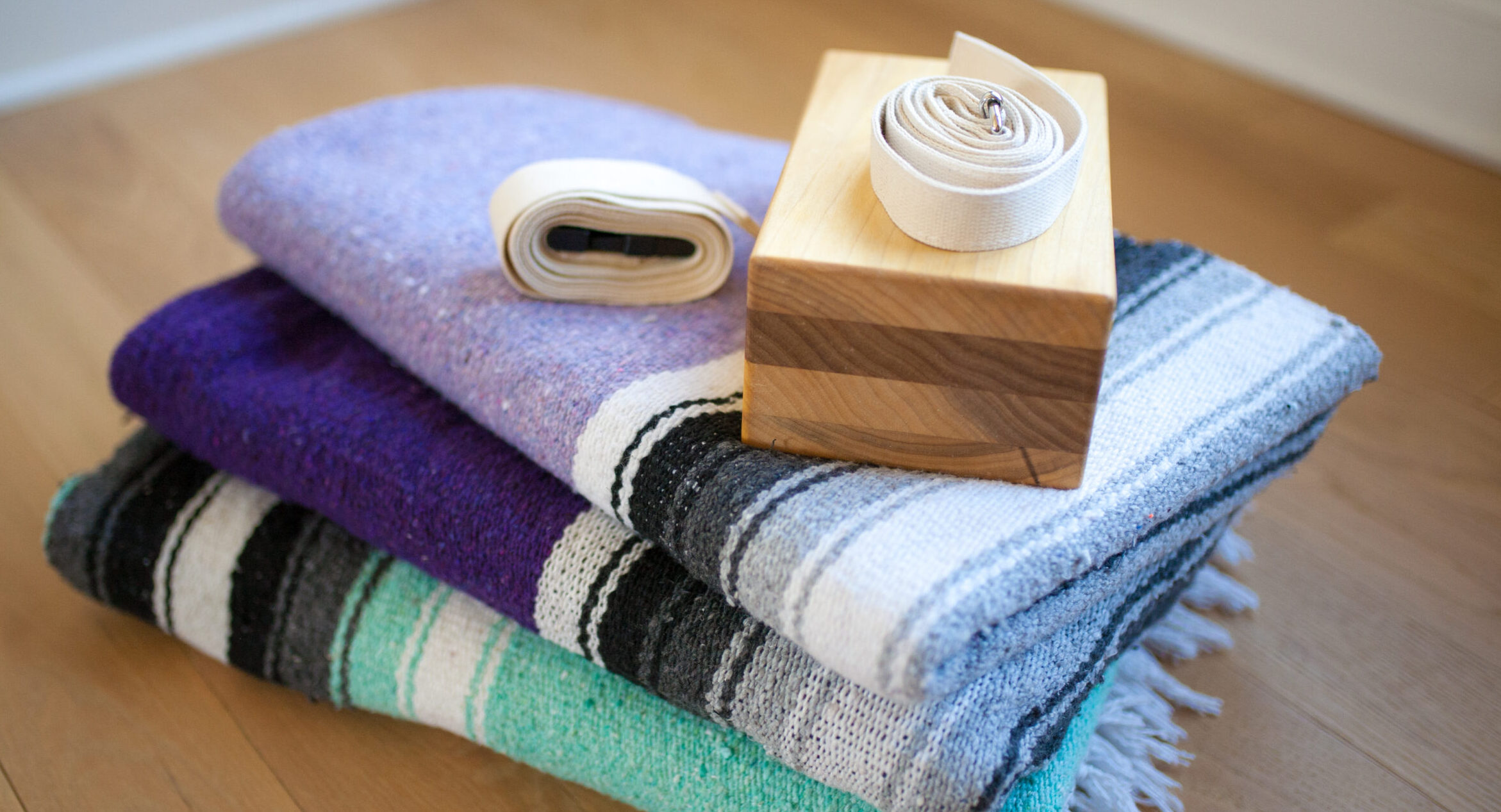In Iyengar yoga props play an integral part for a practitioner. Often yoga props such as blankets, bolsters, belts, blocks, a wall, a chair and rope wall will be used, if available. Props are not just used for the sake of using them. They are used when needed for improved alignment or to help create awareness of body parts and intelligence in the movements.
BKS Iyengar and The Invention of Yoga Props
BKS Iyengar originally invented the use of props when when he noticed that people needed help to access the poses. He started using items that he could find around the house. This practice developed and became a signature of Iyengar yoga as we know it today. Props are used to achieve a safe practice and to allow for better alignment and access to postures for all levels of yoga students. They also, very importantly, assist the senior student in enjoying a varied yoga practice using blankets, props and a chair. A wide variety of props are also used extensively in therapeutic sessions. Here are some of the many reasons why we use yoga props:
- They help achieve correct alignment in the poses.
- They help the stiff or and a person with injuries access poses easier.
- Seniors that may have stiff or painful joints can be helped with props.
- Props like blankets and a chair can make yoga gentle and give an all-round practice for the elderly student.
- Props help bring awareness to body parts and movements and help our mind tune inwards and be more mindful overall.
- A variety of props used in different ways can assist a practitioner work towards postures that would otherwise be beyond their reach.
- Props help in making the practice safer for both beginners and the more advanced students.
- Props can take the fear factor out of certain poses, especially the inversions. In this way the students gain strength and confidence.
- For an advanced Iyengar yoga practitioner the props give endless ways to practice and to make the practice fun and varied.
- Props enables the student work on movements in so many variety of poses. A good example is the use of a chair working towards the full backbends. If unable to push straight up into a Urdhva Dhanurasana, we use a chair to work on the movements, build strength and eventually access the pose.
- People with special needs can enjoy an adaptive approach to yoga with props supporting their body in various ways.
- Last but not least, props are great for a complete restorative practice and pranayama.
Alignment and Safety with Yoga Props
Key to understanding Iyengar yoga is the concept of alignment. The reason that B.K.S. Iyengar invented yoga props in the first place, were so students could access the poses with the right alignment to make yoga safe for the body and its joints. Then, as the students become stronger and more flexible, they no longer need the props or can slightly change the way the props are used to fit the way the body or the pose has changed with increased practice. The more advanced practitioner uses props to support the body while gaining strength in the work towards the more difficult postures.
Personally, I love all my yoga props and I use them in my daily practice in so many different ways. Whenever I practice without any of these at all I feel limited in what I can do. The props give me a way to explore and have fun and enjoy my practice in a way that I wouldn’t otherwise be able to!

